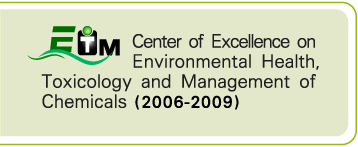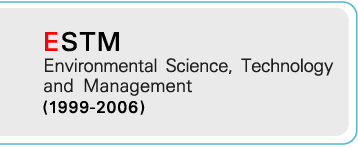| Part 1 Contamination of Cadmium and Mercury Along the East Coast of the Gulf of Thailand: A comparative study using the green mussel (Perna viridis), Artificial mussel, water and sediment.
We compared Cd and Hg concentrations in green mussel (Perna viridis) in wet and dry seasons along the Gulf of Thailand affected by different anthropogenic activities (Angsila – aquaculture, Sriracha – shipping, and Maptaphut – heavy industry). Levels of Cd in mussels and Artificial Mussels from Angsila during wet (mean ± SD 1.72 ± 0.2 µg/g dry wt.) and dry seasons (1.21 ± 0.52 µg/g dry wt.) were significantly higher than those in Sriracha and Maptaphut. Likewise, levels of Cd in Artificial Mussel (AM) were also highest in Angsila. Mean concentration of Hg in green mussels fluctuated only within a narrow range (0.07- 0.08 µg/g dry wt.) at all sites in the wet season, but was significantly lower in the dry season (0.03 µg/g dry wt.). Maptaphut had the highest Hg concentration in sediment during the dry season (0.17 ± 0.11 µg/g dry wt.). In contrast, level of Hg in mussel was 2-3 times higher in the wet season than the dry season at all sites. Nevertheless, levels of Cd and Hg in mussel and sediment at all sites were still below the national Seafood/Sediment quality standards established in other countries.. Significant correlation was found between level of Cd in mussels with those in Artificial mussels and water and sediment, indicating both mussels and Artificial mussels can provide a reliable estimate on Cd contamination in the aquatic environment. Part 2 Immunological status of farmed green mussel (Perna viridis) and its body burden with cadmium and mercury from the Eastern coastal area of Thailand We investigated immunological responses of farmed green mussels (Perna viridis) from three major areas along the eastern coast of Thailand. The green mussels from these estuarine areas are currently at risk from development for shipping and other industries. These activities expose mussels to xenobiotics that cause adverse effects on their immune function. In order to ascertain Cd and Hg exposure in mussels, this research compared the presence of these heavy metals in mussel tissue during the wet and dry seasons. The haemocyte mortality rate for mussels collected from Angsila Estuary (22.8±12.9% in dry and 33.4±13.6% in wet season) was higher than Sriracha seaport and Maptaphut Industrial Estates, with a positive (0.602) and statistically significant (p <0.05) correlation with Cd in mussel tissue. The seasonal changes had direct influence on immunosuppression in mussels from two of the sites: Sriracha Seaport and Maptaphut Industrial Estate. Mussels sampled in the rainy season had lower levels of superoxide radicals than the dry season, except for Angsila. The superoxide anion levels were similar for both seasons, with negative (-0.425) and statistically significant (p <0.05) correlations between superoxide anions from the three sites and amount of Hg in mussel tissue. This indicates that the concentration of Hg in mussel tissue has increased to a level that reduces the haemocytes’ superoxide anion activity against diseases. The haemocytes can be distinguished as three types: granular eosinophil, granular basophil and hyaline cells. The differential haemocyte counts (DHC) revealed that the relative proportion of cell types was influenced by season. During the rainy season, a reduction in granular eosinophils was related to the concentrations of Cd and Hg found in mussel tissue, with statistically significant difference (p<0.05). Meanwhile, the dry season tissue samples from Angsila Estuary exhibited lower phagocytic activity than in the rainy season and was lower than both seasons for Sriracha Seaport and Maptaphut Industrial Estates. However, no correlation was found between the phagocytic activity and Cd and Hg levels in mussel tissue. This indicates that other toxicants may be the cause of phagocytic function suppression in mussels from Angsila Estuary. The immune system of mussels from the three locations were transformed (immunomodulation), which negatively affected their health. Further investigation is required into the spatial and temporal xenobiotics to find the correlation between their immune system and heavy metals along the east coast of Thailand. This will support the regulation of marine pollution as well increase marine farming productivity and consumer safety. แหล่งข้อมูล:
|
 Center of Excellence on Environmental Health and Toxicology (EHT)
Center of Excellence on Environmental Health and Toxicology (EHT)










